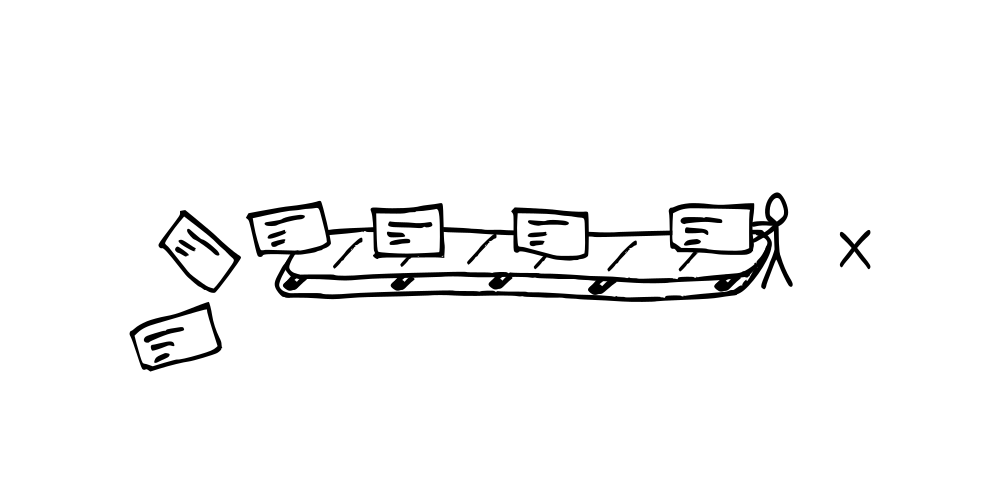Create long-term assets

Every day, we have a certain amount of energy. That energy can be used productively, or non-productively.
You can use your productive time in 2 main ways:
- To provide a service
- To work on an asset
Serving others is great. You attempt to help people. You solve problems and you get knowledge, understanding, and money in return.
This can be sustainable. I know people who like their job, and will keep it until they retire. I have no issue with that.
Yet, services tend to be bound to time directly. If you stop providing services, your income stops.
On the other hand, if you create assets, it continues to roll in. This is the Holy Grail. You take your knowledge, and package it into something. It can be a book or a blog post (text), a movie or a YouTube video (media), or an app or website (code & design). What matters is that it can live on the Internet, to be found by others.
Digital assets are the ultimate means to freedom.
Digital assets
= things that continue to live on the internet and provide some use to others, possibly purchasable. Blog posts, videos, courses,...
The ephemeral and the eternal (almost)
You could argue that a tweet or an Instagram post is an asset. And it is, but it's extremely ephemeral in the vast majority of cases.
Unfortunately, many people channel their creativity only into these ephemeral posts because they are relatively simple to create, but don't turn those posts into anything else. These posts remain as fragments of thoughts, but never quite fit together.
Unite the short-term fragments into a long-term artifact
The problem with the "post mentality" is that each post on social media is standalone by default. It doesn't build up to anything. It's a random scream into the darkness of the Internet. I go into this in much greater depth in this essay.
Most posts don't provide what you might call a Minimum Effective Dose - they aren't persuasive enough to generate change in the mind of the reader. They are little blips of random thoughts that leave no trace but the brief activation of dopamine receptors.
That's why other online assets that don't live on feeds are more useful. The main example of this is a personal website. Of course, some platforms also do an alright job of organizing assets in a long term way—a YouTube video can still be relevant 10 years from now—but the risk of these platforms is that the relevant-but-old gets overshadowed by the irrelevant-but-new. On the other hand, if you put something on your site, it will be there as long as you live (or longer), and it will be as prominent as you make it to be. It's a much more stable, long-term asset.
Create assets that last years, not minutes or days.
The more long-lasting an asset is, the more potential future benefit it holds (for you and others), so prioritize things that will live on the Internet forever. By creating a long-term asset you create a hub of connections. Something substantial that you can share. A packaged experience.
Create 1/1000 of a long-term asset
Every day, you have a finite amount of creative energy. You can allocate it to short-term assets or long-term ones. By default, most people create just short-term assets. Those become irrelevant fast.
Instead, you want to prioritize long-term assets: blog posts, videos, courses, websites, apps,...
If you create even a fraction of a long-term asset, you'll eventually end up with something that is greater than the sum of its parts.
If you don't, and prioritize short-term posts, you'll just end up with a pile of parts that don't mean anything as a whole.
If you already have thousands of tweets or Instagram posts, it's worthwhile to see if there are tweets that could be articles or artworks, short clips that could be long-form videos, or ideas that could become code. Examine your past creations, collate the separate pieces into something more lasting and useful. Something that won't be collecting digital dust by tomorrow.
Escape the post mentality. Be patient and strategic. Create 1/1000 of a long-term asset every day.
-->